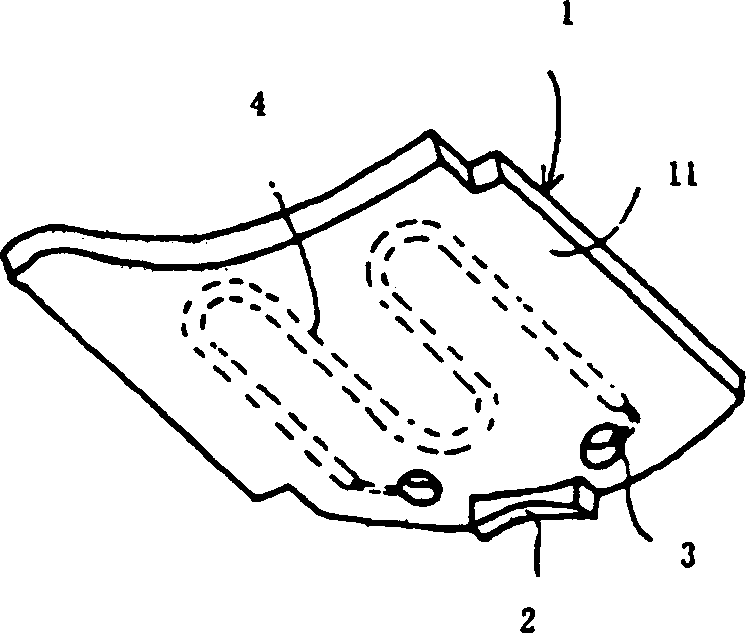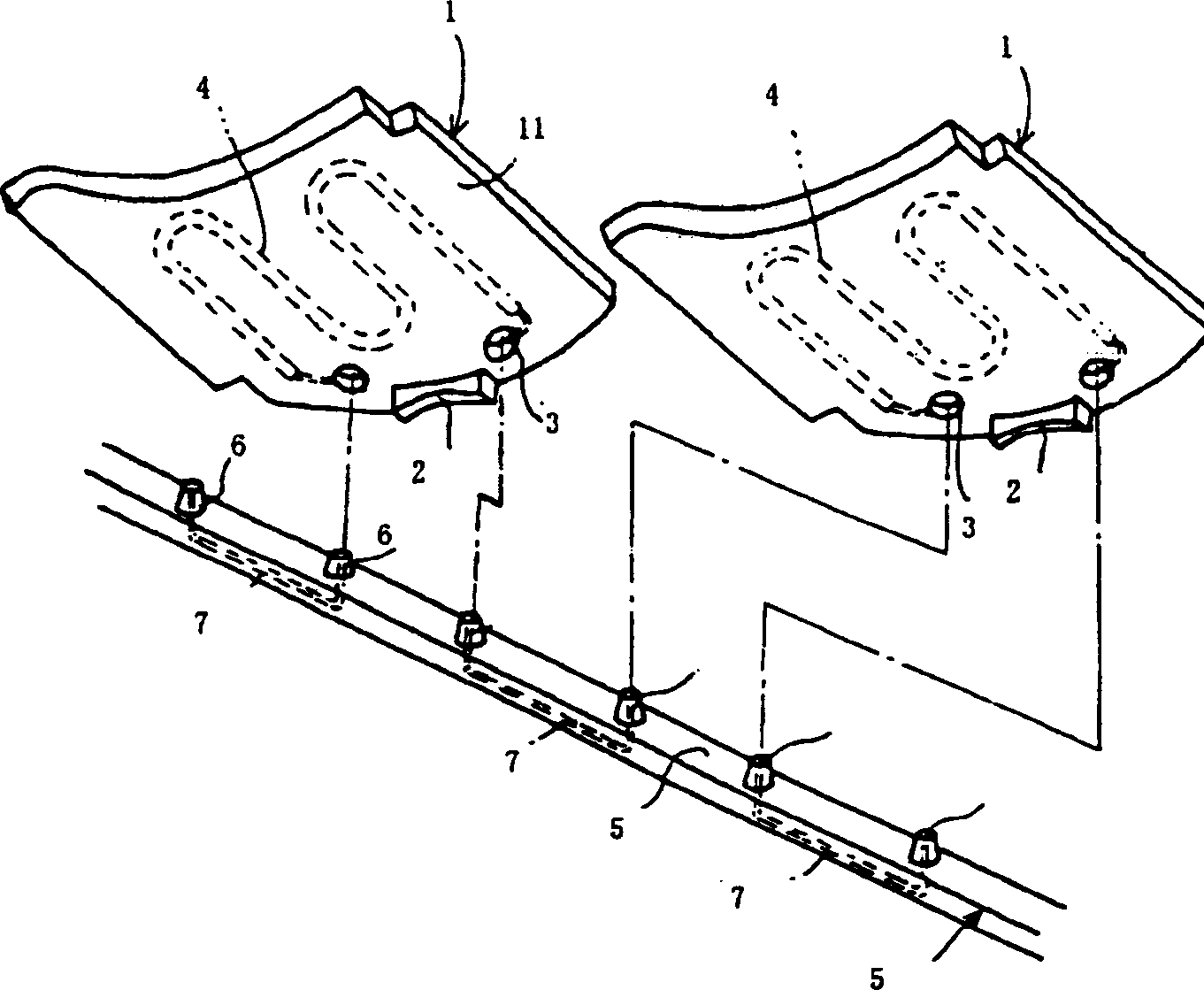Roof tile and snowmelt roof roofed by the tile
A technology for roofing tiles and ceramic materials, which is applied to roofs, roof coverings, and roofs using tiles/slate tiles.
- Summary
- Abstract
- Description
- Claims
- Application Information
AI Technical Summary
Problems solved by technology
Method used
Image
Examples
Embodiment 1
[0070] Embodiment 1 [preparation of fireproof CRB ceramic material]
[0071] 55 kg of defatted rice bran from rice bran and 45 kg of liquid phenolic resin (resol) were mixed and kneaded while heating to 50-60° C. to obtain a plastic homogeneous mixture.
[0072] The mixture was baked in a rotary kiln at 1000°C in a nitrogen atmosphere for 70 minutes. The generated carbonized and roasted agglomerates were pulverized with a pulverizer and passed through a 200-mesh sieve to obtain carbonized powder with an average particle size of 100 μm.
[0073] 70kg of carbonized powder obtained in this way, 10kg of silica powder, 20kg of alumina powder, 10kg of phenolic resin as a binder, 5kg of sodium silicate, and 15kg of water and 5kg of ethanol as a solvent were kneaded together to obtain a plastic homogeneous mixture .
[0074] The particle size of the silicon dioxide used is 5-10 μm, and the particle size of the alumina is 10-20 μm. [Fireproof Roof Tile Molding]...
Embodiment 2
[0081] Embodiment 2 [preparation of fireproof CRB ceramic material]
[0082] 75 kg of defatted rice bran from rice bran and 25 kg of liquid phenolic resin (resol) were mixed and kneaded while heating to 50-60° C. to obtain a plastic homogeneous mixture.
[0083] The mixture was baked in a rotary kiln at 900° C. for 60 minutes in a nitrogen atmosphere. The generated carbonized and roasted agglomerates were pulverized by a pulverizer and passed through a 200-mesh sieve to obtain a carbonized powder with an average particle size of 90 μm.
[0084] 80 kg of the carbonized powder thus obtained, 60 kg of alumina powder, 10 kg of aluminum phosphate as a binder, and 25 kg of water as a solvent were kneaded together to obtain a homogeneous mixture having plasticity.
[0085] The average particle size of alumina used is 10-20 μm. [Fireproof Roof Tile Molding]
[0086] Next, the resistor 4 made of nickel-chromium alloy wire such as figure 2 Embedded in a plasti...
Embodiment 3
[0092] Fireproof CRB ceramic material roof tiles with heating elements were produced from CRB ceramic material in the following manner. [Preparation of CRB ceramic material]
[0093] 75 kg of defatted rice bran from rice bran and 25 kg of liquid phenolic resin (resol) were mixed and kneaded while heating to 50-60° C. to obtain a plastic homogeneous mixture.
[0094] The mixture was baked at 900° C. for 60 minutes in a nitrogen atmosphere in a rotary kiln. The generated carbonized and roasted agglomerates are crushed with a pulverizer and passed through a 100-mesh sieve to obtain carbonized powder with an average particle size of 50-250 μm.
[0095] 75 kg of the carbonized powder thus obtained was kneaded with 25 kg of solid phenolic resin (resol) while heating to 100-150° C. to obtain a homogeneous mixture having plasticity. [Form heating element]
[0096] This plastic mixture is press molded under 22MPa to obtain such as figure 2The heating resistor shown. The mold temp...
PUM
| Property | Measurement | Unit |
|---|---|---|
| The average particle size | aaaaa | aaaaa |
| Granularity | aaaaa | aaaaa |
| The average particle size | aaaaa | aaaaa |
Abstract
Description
Claims
Application Information
 Login to View More
Login to View More - R&D
- Intellectual Property
- Life Sciences
- Materials
- Tech Scout
- Unparalleled Data Quality
- Higher Quality Content
- 60% Fewer Hallucinations
Browse by: Latest US Patents, China's latest patents, Technical Efficacy Thesaurus, Application Domain, Technology Topic, Popular Technical Reports.
© 2025 PatSnap. All rights reserved.Legal|Privacy policy|Modern Slavery Act Transparency Statement|Sitemap|About US| Contact US: help@patsnap.com



